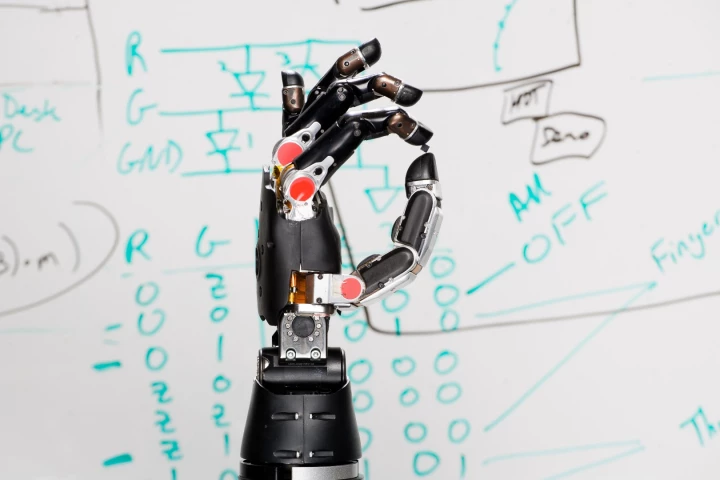Tactile
-
When people want to experience tactile feedback while exploring virtual reality environments, they use hand-held devices that vibrate in response to the touching of virtual surfaces. Now, however, scientists are developing gloves that reportedly provide a much more life-like experience.
-
Researchers are developing an artificial nervous system for robots, a tool they believe will better equip these machines to avoid damage and preserve their well-being.
-
Sending ultrasound waves through the back of hand to deliver tactile sensations to the front might sound a little far-fetched, but by achieving just that UK scientists claim to have cleared the way for computers that use our palms as advanced interactive displays.
-
Dennis Aabo Sørensen may be missing a hand, but he nonetheless recently felt rough and smooth textures using a fingertip on that arm. The fingertip was electronic, and was surgically hard-wired to nerves in his upper arm.
-
We've already seen a number of systems designed to alert blind users to objects in their path, using cues such as audio tones or vibrations. The "Proximity Hat," however, applies pressure to the wearer's head, in the direction of the obstacle.
-
Suppose you had a tablet that only displayed one line of text at a time. It would be pretty frustrating, but it's a limitation that blind users of braille-displaying devices are faced with constantly. Thanks to new technolog, however, full-page braille tablets could soon be on their way.
-
A mechanical hand utilizing DARPA-developed neural technologies has become the first to allow a paralyzed patient to feel physical sensations through a prosthesis. The test subject was able to determine which mechanical finger was being touched whilst blindfolded, with total accuracy.
-
In what could just as easily prove to be a very bad idea as it could a good one, a startup company called Feelreal has created a virtual reality mask and helmet that lets you smell virtual environments as well as feel a little of their atmosphere.
-
Phorm is a case for the iPad mini that features clear round buttons that rise up over top of the characters on the tablet's virtual keyboard, giving users the tactile sensation of using a physical keyboard. When not needed, those buttons simply disappear.
-
Hoping to add back a bit of personal touch to today's cold, impersonal digital communications, New Jersey-based startup Tactonics thinks the world might just get hooked on "tact" messaging.
-
Just last month, Volvo announced a new system that warns drivers of approaching cyclists via a symbol on their car's head-up display. Not to be outdone, Jaguar Land Rover has just announced its own system, which takes a more tactile approach – among other things, it taps them on the shoulder.
-
The next frontier in human-computer interaction will be all about making you feel the virtual, digital world as though it were real and tangible. And haptics, a technology that's advanced at a snail's pace over the past 40 years, is the key to making that happen.
Load More











